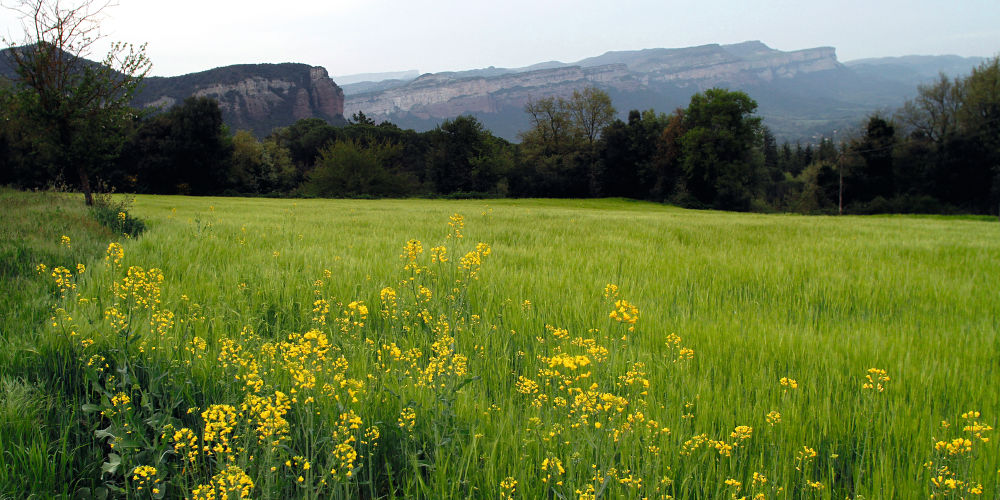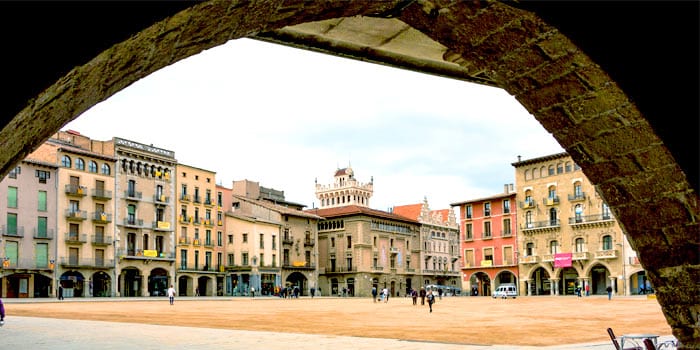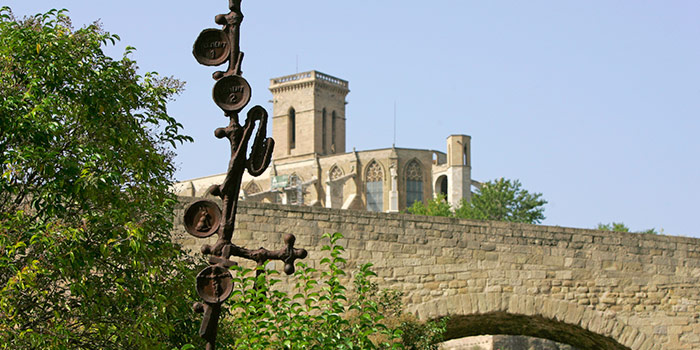
Natural Area of Les Guilleries-Savassona

Path of Bishop and Abbot Oliba

Ignatian Way through Manresa
Paths to Heaven
The pilgrim is perhaps the most ancient kind of tourist. Motivated by a desire for spiritual growth, pilgrims walk long distances, exploring new landscapes and different cultures with the goal of achieving a more sublime reality. Nevertheless, nowadays the profile of pilgrims has diversified considerably and religious routes have become more than paths to self-knowledge. Here you have 4 routes for modern pilgrims.
1. The Way of Saint James
The section of the Way of Saint James that crosses Catalonia begins at La Jonquera, on the border with France, entering the province of Barcelona through the Guilleries Massif, crossing the cities of Vic and Manresa, stopping at the Abbey of Santa Maria de Montserrat and continuing as far as Igualada, before crossing into the province of Lleida. In total, there are 180 kilometres to cover in 9 stages, an ideal route if you want a few days of introspection or wish to enjoy the natural, historical and cultural wealth of the route.
2. The lgnatian Way
Another interesting path is the one that recreates the route followed by the soldier Ignatius of Loyola in 1522 from his home town of Loyola to Manresa. Following his spiritual conversion in a simple cave over the Cardener River, the Basque pilgrim took the decision to abandon the life he had led until then and head to the Holy Land to fulfil his desire to “work for the good of souls”. Saint Ignatius is still a hugely important figure in the capital of the Bages region and there are many places that bear the indelible mark of the founder of the Jesuit order.
3. The Paths of Bishop and Abbot Oliba
Bishop and Abbot Oliba was a Benedictine monk who for a short period held the title of Count of Berga i Ripoll. After renouncing his title he entered the Monastery of Santa Maria de Ripoll. He was a driving force behind Romanesque architecture and the route created in his honour draws together the extremely valuable architectural heritage of the regions of Osona, Bages and Ripollès. Highlights include the Monastery of Santa Maria de l’Estany, the Romanesque portal of the Collegiate Basilica of Santa Maria in Manresa (known as La Seu), the Monastery of Sant Pere de Casserres and the Episcopal Museum of Vic.
4. The Monks’ Path
Legend has it that the abbot of the Monastery of Sant Llorenç del Munt asked the Bishop of Barcelona for permission to found a monastery on another site since its land was not fertile enough and the isolated spot on which it stood, at the top of La Mola Mountain, made its occupants suffer from “the sickness of sadness”. The bishop granted permission for the move, stipulating that they could settle wherever they liked as long as they didn’t cross any river, stream or intermittent stream to get there on foot. And that is how they crossed Matadepera, Terrassa and Sant Quirze del Vallès, before deciding to settle in Sant Cugat, where they founded their magnificent monastery. Today, you can complete the Monks’ Path on foot in less than four hours, enjoying some wonderful panoramic views.
More information:
The Way of Saint James The lgnatian Way
Path of Bishop and Abbot Oliba
The Monks’ Path

